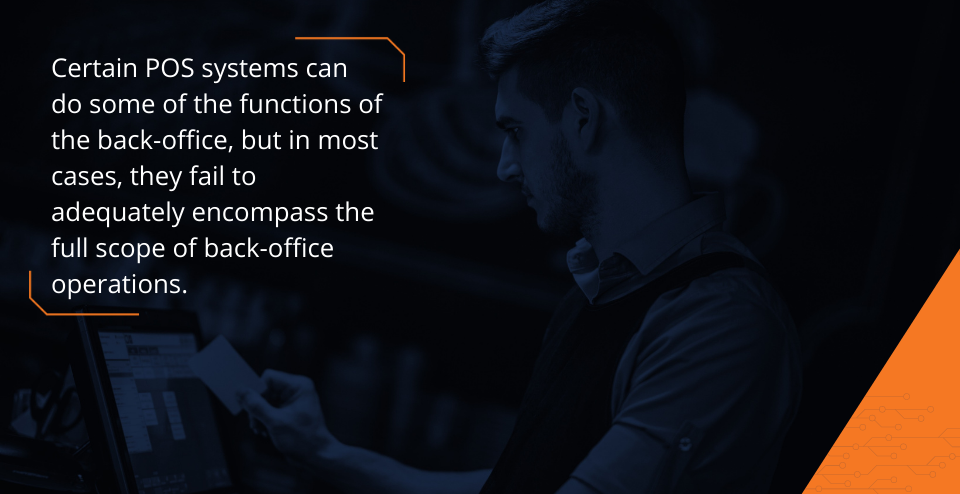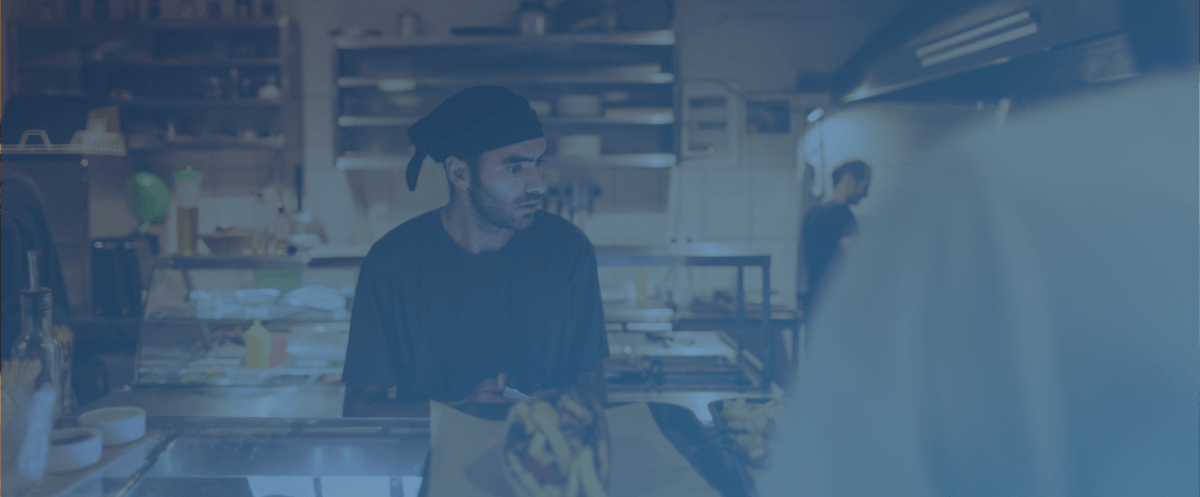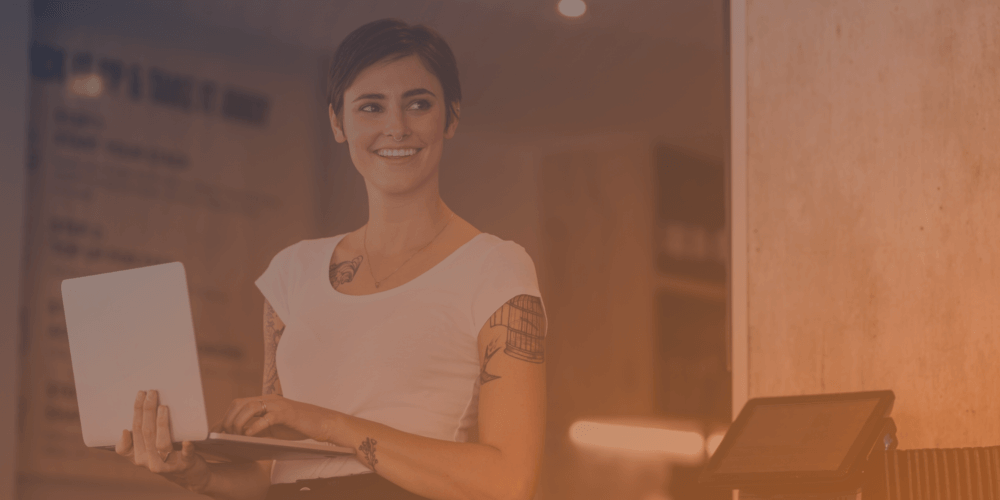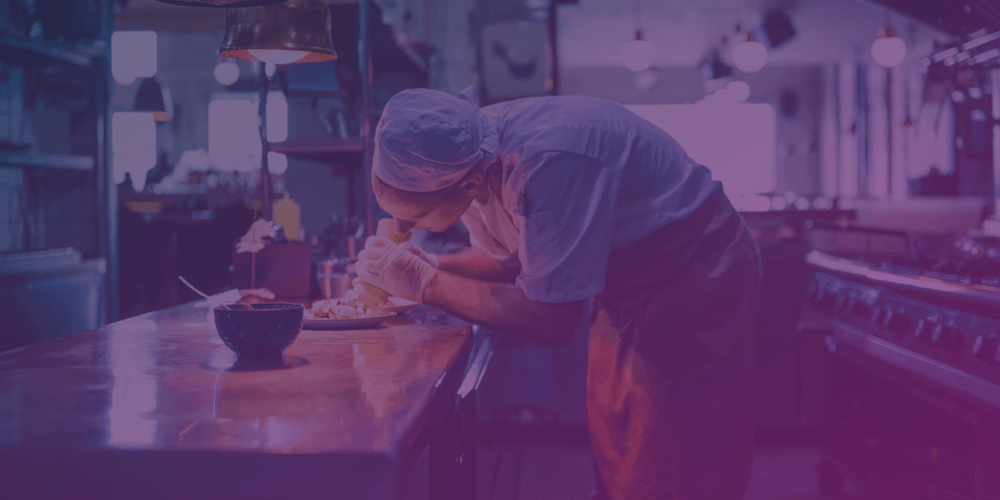Much of the restaurant industry is focused on moving product out the door, yet not nearly as much attention has been placed on product coming in the door.
You can see this disparity in the overall perception of Point-of-Sale (POS) software, which is largely and understandably considered a necessity for a modern restaurant. Whether you’re a family-owned restaurant or a massive concept with hundreds of locations, a POS ensures your team is able properly tally orders, unite all team members with a core set of data, and make key operational adjustments that can increase profit and limit loss.
But back-office software isn’t nearly as prevalent, despite having arguably just as large of an impact on restaurant operations. Let’s look more closely at back-office software, its uses, and why it’s so important for your concept.
Back-Office Software: Defined
Back-office software for restaurants is any application used to coordinate the administrative, non-customer-related transactions and operations of a location. Some of the most common back-office operations include:
- Inventory ordering and management
- Labor scheduling
- Waste monitoring and variance
- Sales analytics
The traditional picture of a restaurant back-office is a GM working until the wee hours of the night (or the morning) in a tiny little room, plugging in numbers, comparing data, and placing the inventory orders necessary to get the location back up and running for the next shift.
Clearly, this picture has evolved. Today’s most successful restaurant managers have streamlined their operations electronically, using software to do in minutes what used to take days, with critical adjustments made on the fly thanks to real-time data.
Back-Office Versus Front-of-House
Another helpful way to think about back-office software is to compare it with software used in guest-facing areas: namely, POS software.
POS is largely concerned with those things that happen in sight of the guests and enable orders to be placed:
- Bar operations
- Cashier and waitstaff transactions
- Online ordering
- Third-party delivery and carry-out apps
Certain POS systems can do some of the functions of the back-office, but in most cases, they fail to adequately encompass the full scope of back-office operations.
That’s because they were built from the ground up to initiate restaurant-to-customer sales transactions, rather than restaurant-to-vendor transactions. The unique challenges of inventory operations, particularly when it comes to supply chain management and price fluctuations, are typically not accounted for with a POS application.
The Back-Office Software Difference
Back-office software, on the other hand, is built from the ground up to accommodate the unique needs of operations and transactions not related to the customer. The most notable of these is inventory ordering and management, but as we stated up top, it also pertains to waste variance, scheduling, and more.
Let’s take a look at each of these functions and highlight how back-office software can speed up and optimize operations.

Inventory Ordering
Plenty of applications will let you place orders with your vendors. But software built from the ground up to meet the unique operational challenges of the restaurant back-office takes things a step further.
Back-office software will let you set your inventory ordering on a schedule and show you the cost of goods bought in comparison with cost of goods sold. It will do this not just for each individual entrée or menu item, but down to the ingredient. This allows you to see right away if the cost of a certain ingredient has become prohibitively expensive, if you’re plating too much food, or if there might be a better price with another vendor.
Waste Variance
With such close tracking of your inventory, you also will have a much better idea of what food you consistently throw out.
When you input details about inventory waste into a back-office software application, you can see exactly how much is being put in the trash versus on the plate. Especially savvy restaurant operators will even estimate and/or measure how much food is being left on the plate by sated guests, highlighting areas where too much of an ingredient is being plated.
Labor Scheduling
The modern restaurant doesn’t just create an exceptional experience for the guest; it creates an exceptional experience for employees too.
Electronic software lets general managers fill in upcoming schedules, optimized by historic trends and easily viewable employee availability. This makes the general manager’s job easier, and it also makes it easier for employees who don’t have to furiously jot down notes about their schedule. Instead, they have it readily available on their phone, at the same time each and every week, and they can swap shifts on the fly if the need arises.
This adds up to a more pleasant experience for all involved in the restaurant.
Sales Analytics
If your back-office software integrates with your POS system (and it should!), then you also have the ability to pull sales reports and compare them with your inventory data. You can then create detailed custom reports to fit your requested parameters and quickly see high-level information that lets you set the strategic course for your entire concept.
Get Back-Office to Where You Once Belonged
A POS is critical to your restaurant operations, but it’s only half the picture.
If you’re not unifying the back-office experience across your concept and doing so in a streamlined manner that cuts costs, then you could be leaving money on the table.
For more information on back-office software built by restaurateurs for restaurateurs, contact Decision Logic. We designed our product from the ground up to address the back-office needs of those who are in the trenches of the restaurant business every single day.
Let’s talk about how we can help you reduce your operating costs while boosting your profits.




